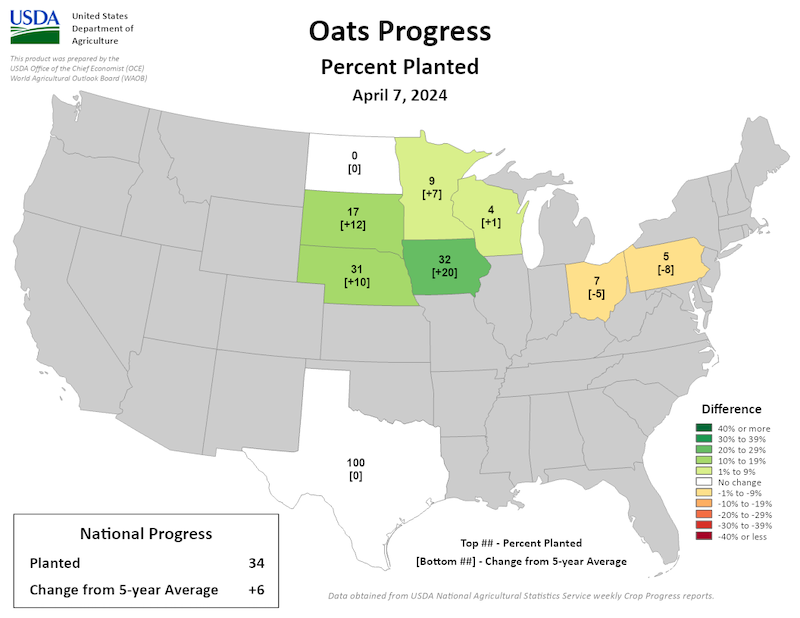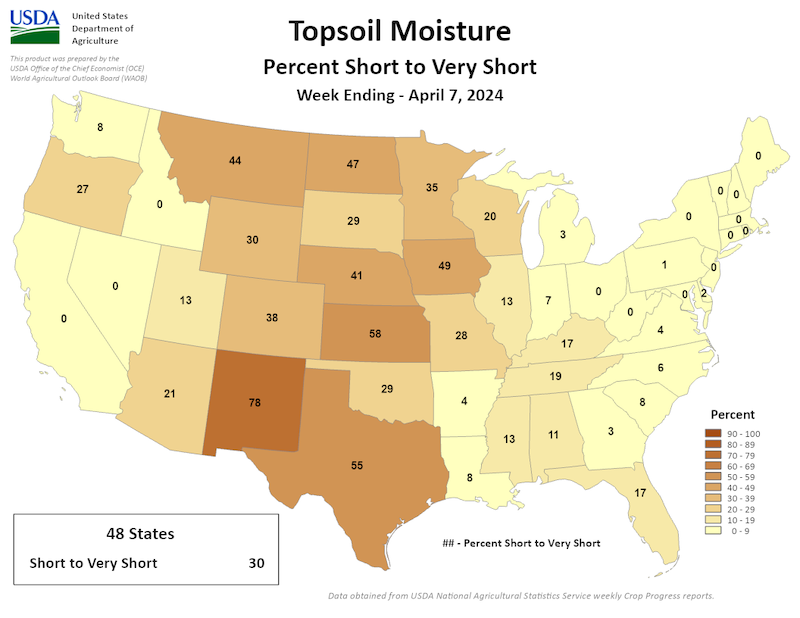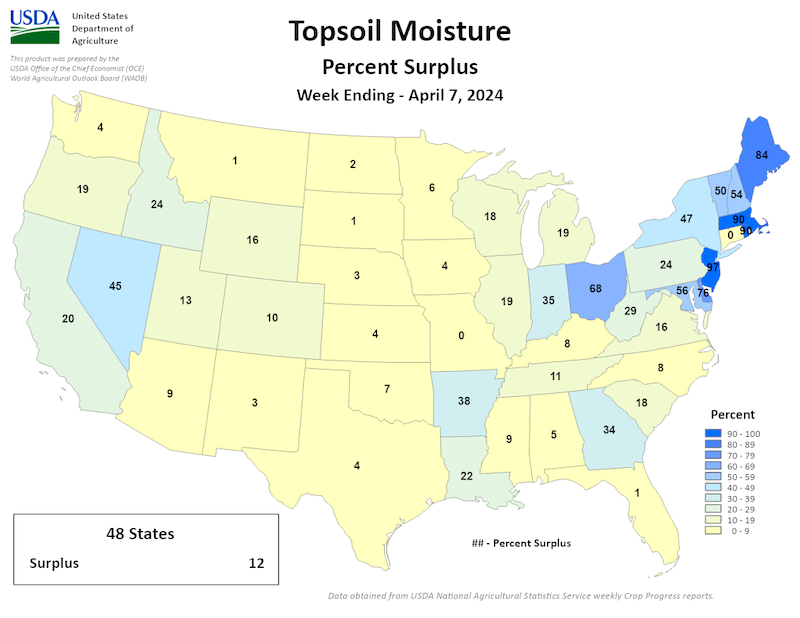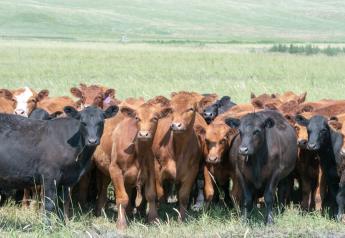It's Scary Dry in the Western Corn Belt, But a Drastically Different Story in the East This Year
West vs the East for Planting Moisture- FJR 04/12/24
The U.S. drought picture has drastically changed over the past six months, but dry conditions continue to grip the western Corn Belt. Meteorologists say there’s a stark difference in planting conditions in the west versus the east this year.
The latest U.S. Drought Monitor shows after an El Nino winter and active early spring weather pattern, drought coverage is now at its lowest level since spring of 2020. In early April, more moisture fell across the Mississippi Valley to the East Coast. A strengthening low-pressure system and trailing cold front brought 6" to 18" of snow across the Upper Midwest and northern New England. Rain also saturated soils to the south.

Planting progress numbers for corn are starting to roll in, but USDA meteorologist Brad Rippey says there’s another crop to watch that might be a better indicator of planting progress this spring.
“I think oat planting is actually a pretty good surrogate for how fieldwork is actually going in the Midwest this time of year,” Rippey says. “You'll notice an interesting trend on the oat planting chart — in the western part of the Corn Belt, look how fast the crop is going in.”
USDA’s second Crop Progress of the year last week showed oat planting in Iowa is 20 points ahead of normal. South Dakota is 12 points quicker than the average pace. Both are signs that dry weather is creating a rapid planting pace.

“If you look at the numbers for Iowa and Nebraska, you'll see almost one-third of the intended oat acreage has been planted by April 7. That's way ahead of normal,” Rippey explains. “We see planting already taking place in South Dakota, Minnesota and even Wisconsin. Those numbers are pretty unusual for this time of year, so that indicates underlying dryness still exists in parts of the Upper Midwest, the western Corn Belt region and, of course, extending back to the Great Plains.”
In contrast, once you get east of the Mississippi River, oat planting is behind average. The planting pace in Pennsylvania was 8 points behind average last week, and that was before more rain fell across the eastern half of the country last week.
“We've effectively sharpened that gradient, and we'll see those delays in the eastern Corn Belt starting to multiply. For the most part, it's going to be planters rolling in the Upper Midwest and the Great Plains, as we have seen a deficit of rainfall the past several weeks.”
Topsoil Moisture Map Shows Severe Dryness

Rippey says it's also a good idea to monitor USDA's topsoil moisture map. The topsoil moisture in New Mexico is considered nearly 80% short to very short. In Kansas, nearly 60% of the top soil moisture falls in that category as well.
If you then look at areas considered to be in surplus, all of the Northeast and parts of the eastern Corn Belt have too much moisture.

“The big storm a couple weeks ago, bringing that big stripe of moisture across the Midwest, pushed topsoil moisture numbers to 68% surplus in Ohio, 35% in Indiana,” Rippey says.
Dry Conditions Aid Rapid Planting Pace
For areas experiencing drier conditions, planting is clipping along at an impressive pace.
“Of course that is great for keeping the planter going, but we do need moisture for winter wheat and soon for those recently planted summer crops,” Rippey says.
Farmers across the western Corn Belt are deeply concerned about just how dry it is. As dust flies this spring, some farmers even argue the Drought Monitor doesn’t accurately portray the picture, as soil is starved for moisture this year.
“There are people out there who are saying, ‘Man, we've not recovered what we've lost incrementally over the past four years.’ Until we start to see some major moisture recovery deep down in our soil, we're going to have that concern,” says Eric Snodgrass, Principal Atmospheric Scientist for Nutrien Ag Solutions.
Last fall, Snodgrass says 40% of the lower 48 states were experiencing some form of drought. That number has been cut in half. While the recent moisture helped alleviate some concerns in Wisconsin and Minnesota, he says there are other areas, such as Missouri and Nebraska, that are still extremely dry.







